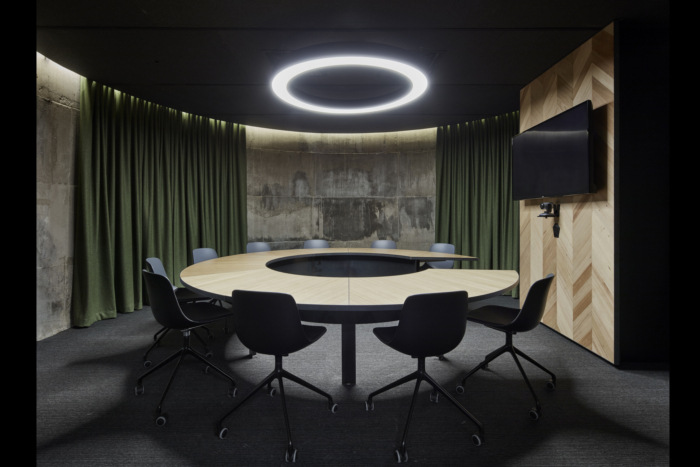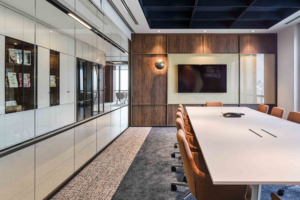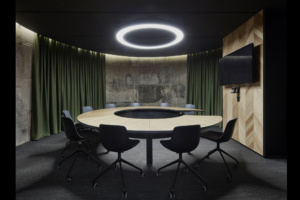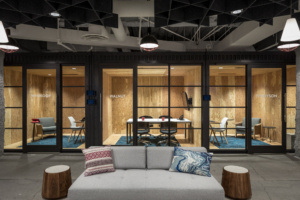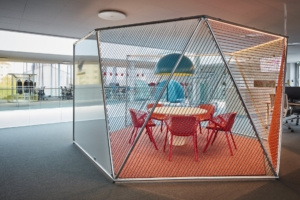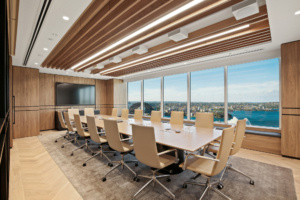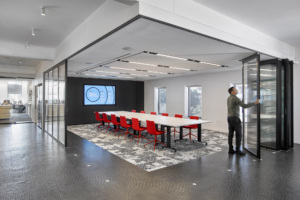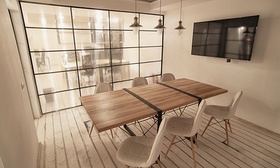Conference Room Design
Everyone knows that unnecessary meetings are the worst part of any work day. But for the meetings that do need to happen, having them in conference room that is well-designed and outfitted with the correct tools can make a big difference when trying to get things accomplished.
Conference Rooms, Meeting Rooms, Boardrooms?
At Office Snapshots we use the term Meeting Room to designate rooms where meetings happen, though globally conference room and meeting room are used interchangeably.
When categorizing project photos we differentiate these spaces by their size and formality even though the function of being a room where people meet is essentially the same:
Small Meeting Room: Meeting rooms which seat 6 or less people
Large Meeting Room: Meeting rooms which seat 7 or more people
Boardroom: Meeting rooms which are more formal and are reserved for executives
Meeting Room Equipment
Naming conventions aside, the provided tools and equipment can either make a meeting room a joy to use or an absolute disaster waiting to happen.
The basic categories are seating, work surfaces, collaborative equipment, acoustics and privacy, though exact specifications are highly subjective and dependent on what an organization needs.
Here are a few thoughts and ideas:
Seating: Longer meetings might require more comfortable and ergonomic seating. Shorter meeting might not even need seating as some companies choose to have stand-up meetings to help ensure brevity.
You can also add bench seating around the conference room perimeter to help expand the maximum number of people when necessary.
Work Surfaces: Most work requires a table of course, though some alternatives might include smaller laptop tables or a lectern for presentation-heavy meeting rooms.
Collaborative Equipment: Videoconferencing, room displays, and writing surfaces such as whiteboard or chalkboards. Meeting rooms scheduling systems can also be important depending on the size of your organization.
Privacy & Acoustics: Some conference rooms require improved privacy and might utilize translucent window film or window curtains to improve the rooms isolation. Quality acoustics also play an important role by keeping sound either in or out to improve focus as well as the quality of video conferencing.
